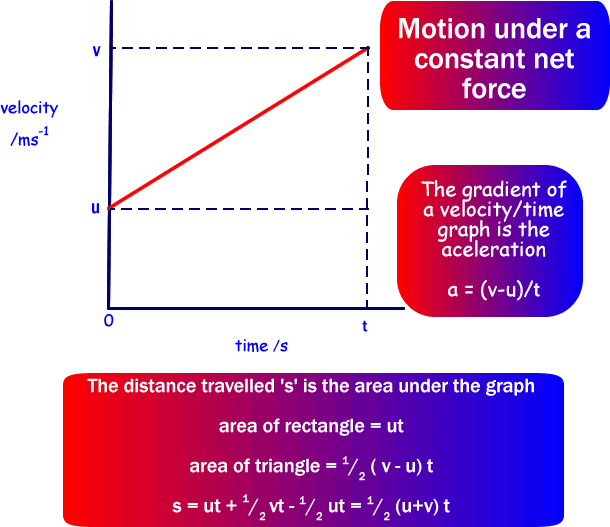|

Consider the graphic above. If we plot a graph of an object's motion under the influence of a constant force, we get a graph like the one above.
The initial velocity is u
The final velocity is v
The time of travel is 't'
and the distance travelled in that time is 's'
We get two relationships directly from that graph:
From the gradient we get:
equation 1
v = u + at
From the area under the graph we get
equation 2
s = 1/2 (u + v)t
If we replace the v in the second equation with the expression from the first. we get
s = 1/2 (u + (u + at))t = 1/2 (2u + at))t = (u + 1/2at)t
equation 3
s = ut + 1/2at2
If we square the first equation we get
v2 = (u + at)2= u2 + a2t2+ 2uat = u2 + 2a (1/2at2 + ut)
and substitution of (1/2at2 + ut) as 's' from equation 3 gives us:
equation 4
v2 = u2 + 2as
The thing to remember about these equations is they can only be applied to a situation in which a constant net force is acting.There has to be constant acceleration for them to apply.
 Most examination questions wherein you have to use these equations will concern 'objects falling under gravity' - air resistance has to be negligible for them to be applicable... and you may be expected to state that air resistance is being ignored... Most examination questions wherein you have to use these equations will concern 'objects falling under gravity' - air resistance has to be negligible for them to be applicable... and you may be expected to state that air resistance is being ignored...
|